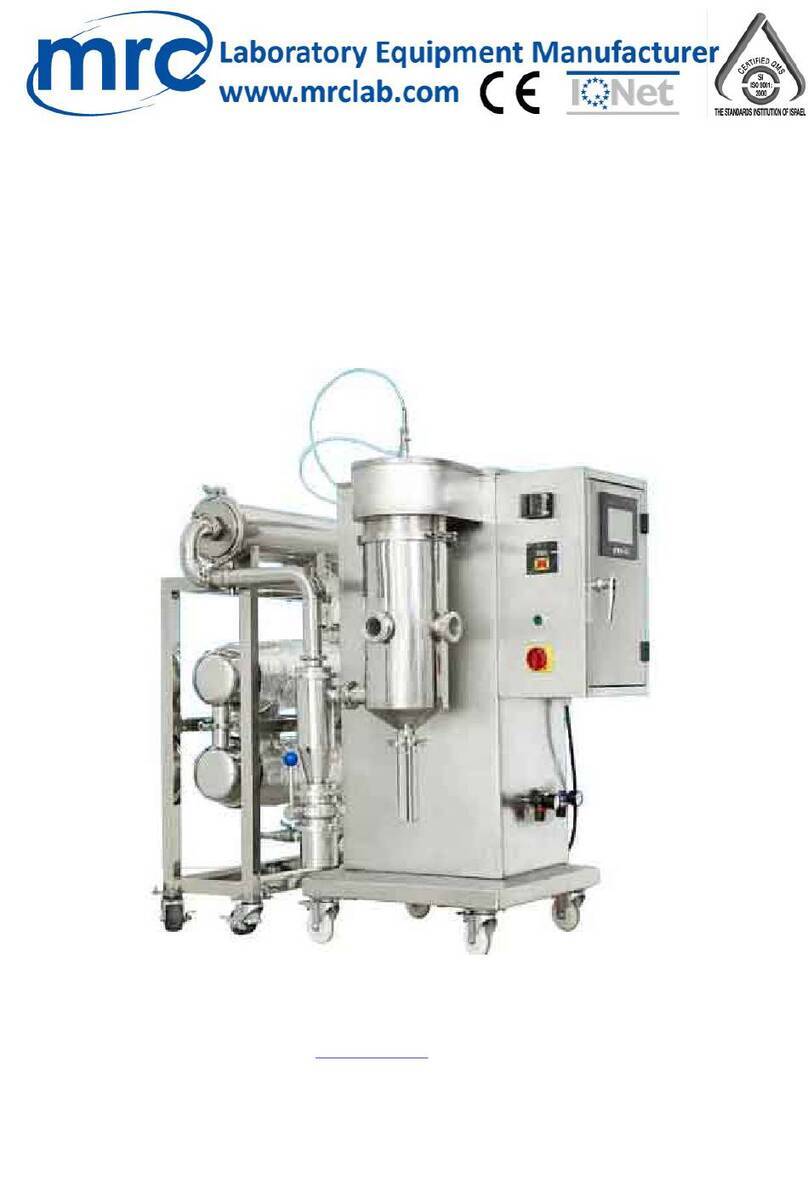
1. Wipe the interior of the collector chamber with a soft cloth or paper towel to remove any accumulated
moisture.
2. Check the collector chamber drain hose to ensure that the hose is free of moisture and that the drain plug is
securely installed. The freeze dryer will not start if moisture is detected.
3. Using a soft, lint-free cloth or paper towel, wipe the collector chamber lid gasket to remove any dirt and
contaminants that could cause a vacuum leak. Vacuum grease is not required on the lid gasket to obtain a proper
vacuum seal.
4. Remove the accessory drying chamber or manifold from the connection port and using a soft, lint-free cloth
or paper towel, wipe the port gasket and sealing surfaces of the drying chamber/manifold to remove any dirt and
contaminants that could cause a vacuum leak. Reinstall the drying chamber or manifold on the port. Vacuum
grease is not required on the port gasket to obtain a proper vacuum seal.
5. Check that each sample valve is closed or in the “upwards” position.
MAINTAINING YOUR FREEZE DRYER
Under normal operation, the Freeze Dryer requires little maintenance. The following maintenance schedule is
recommended:
As needed:
1. Clean up all spills; remove liquids from the chamber.
2. Clean lid and gasket using soft cloth, sponge or chamois and a mild, non-abrasive soap or detergent.
3. Check oil level of the vacuum pump. It should be over the middle line of oil mirror, If the oil level is lower,
add oil to proper level.
4. If oil shows cloudiness, particles or discoloration, drain the pump and replace with fresh oil.
5. Utilization of acids requires immediate cleaning and neutralization after a run or physical damage to the
collector chamber and collector coil will result.
6. Check the collection chamber for condensed or frozen solvents and dispose of appropriately. Completely
empty the collector chamber before the next run or before starting the vacuum pump.
7. If chamber or manifold valves leak or stems become difficult to turn, pull the stem out of the rubber valve
body and apply a thin coat of vacuum grease to the stem. Reinsert the stem into the valve body.
CHAPTER 5
TROUBLESHOOTING
Refer to the following if your Freeze Dryer fails to operate properly. If the suggested corrective actions do not
solve your problem, contact us for additional assistance.
Freeze Dry Systems should reach a vacuum of 999Pa or lower within 10 minutes, and should achieve an ultimate
vacuum of 15Pa or lower within 30 minutes when the refrigeration is operating. If the Freeze Dryer does not
obtain a satisfactory vacuum, perform the following maintenance tests.
I. Vacuum Pump
First make sure that the vacuum pump operates. If it fails to operate, check the electrical connections of the
Freeze Dryer to the power source and then check the electrical connection of the vacuum pump to the Freeze
Dryer. If the vacuum pump has a power switch, make sure that it is turned on. If the vacuum is not adequate
when the vacuum pump is operating, proceed with the following steps:
1. Check the oil and ensure it is clear and clean. If the oil looks cloudy or has any particulates, replace the
pump oil. Sometimes it may be necessary to flush the pump with
clean oil several times. To flush the pump, run the pump 5 to 10 minutes to allow the oil to warm up. Drain the




























